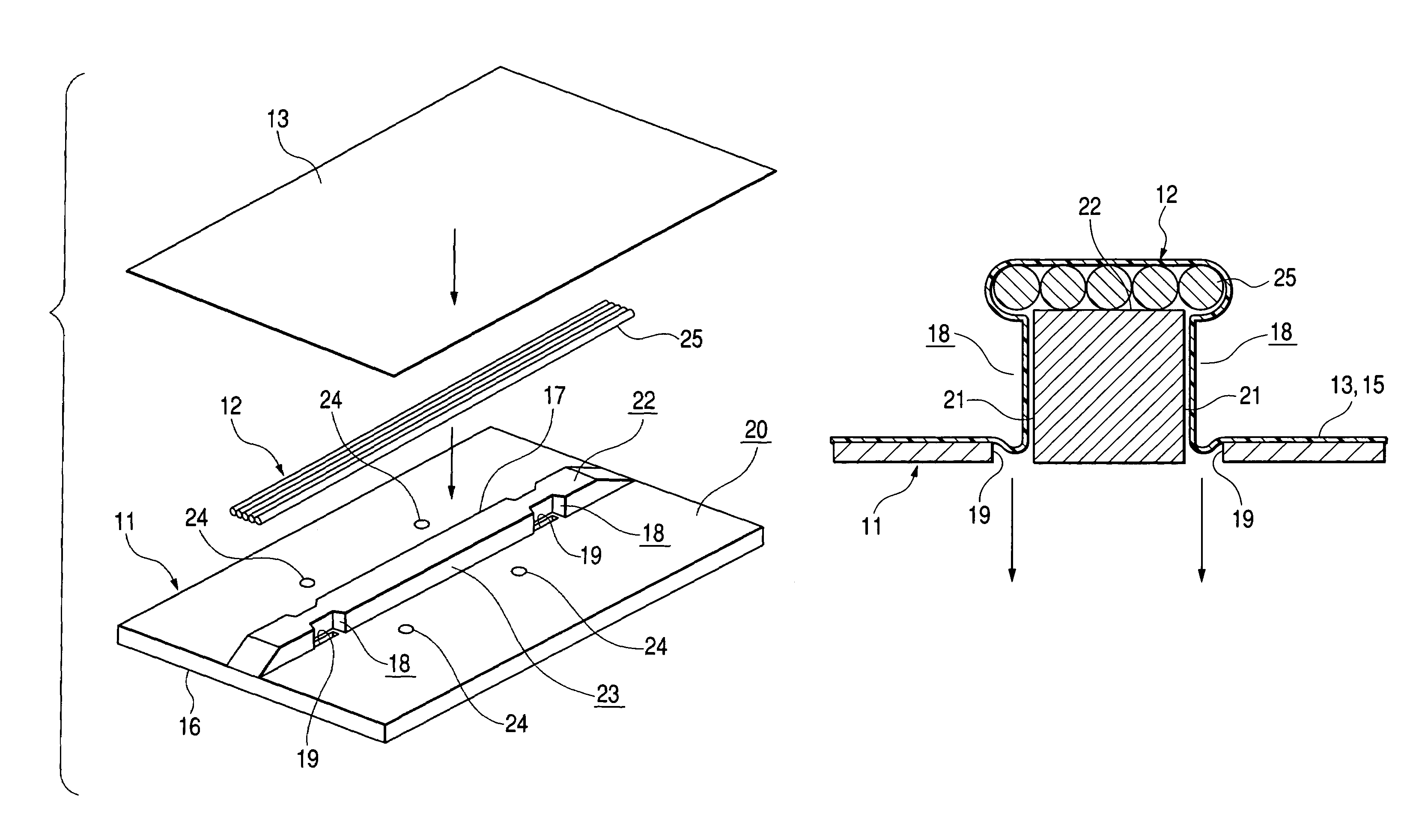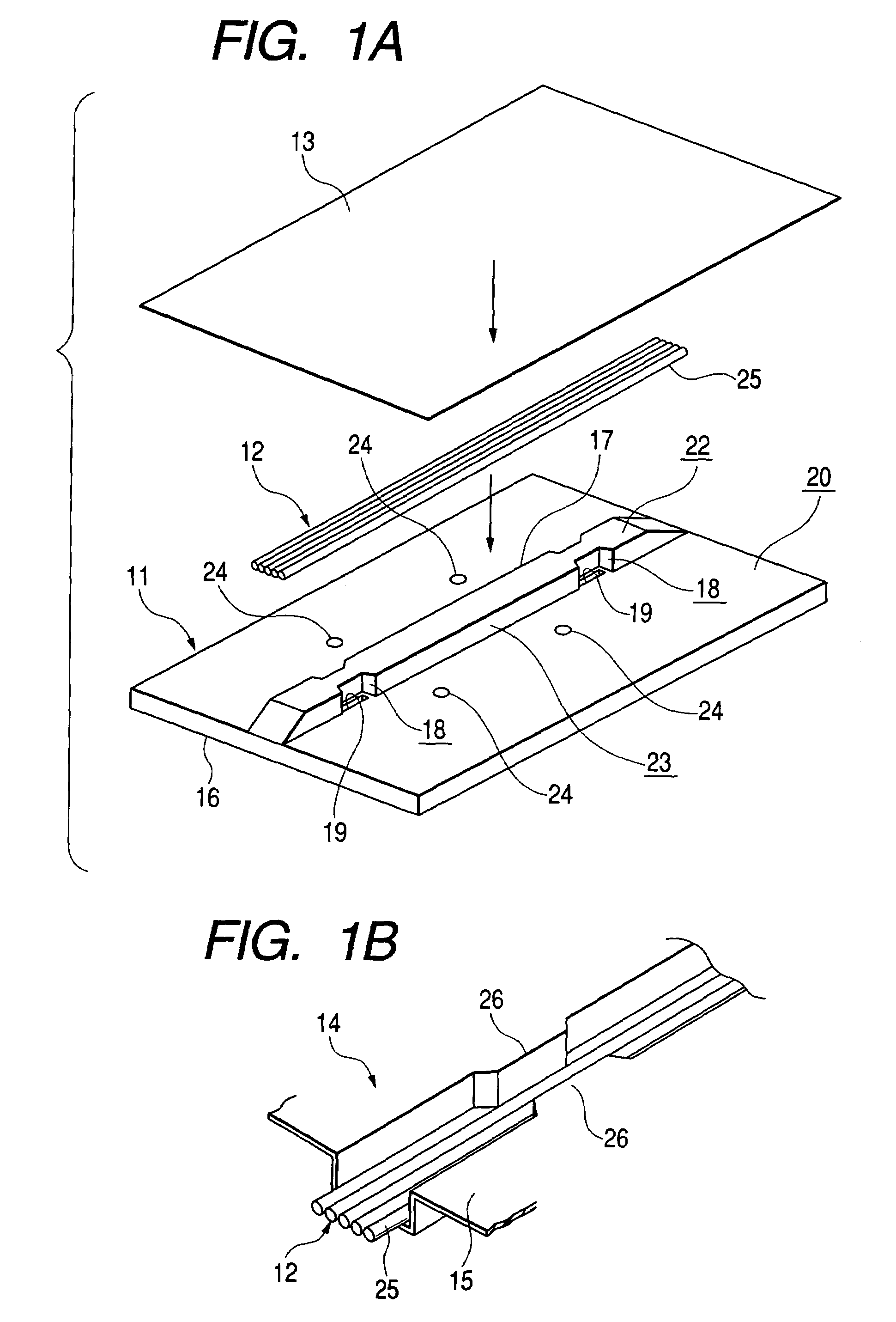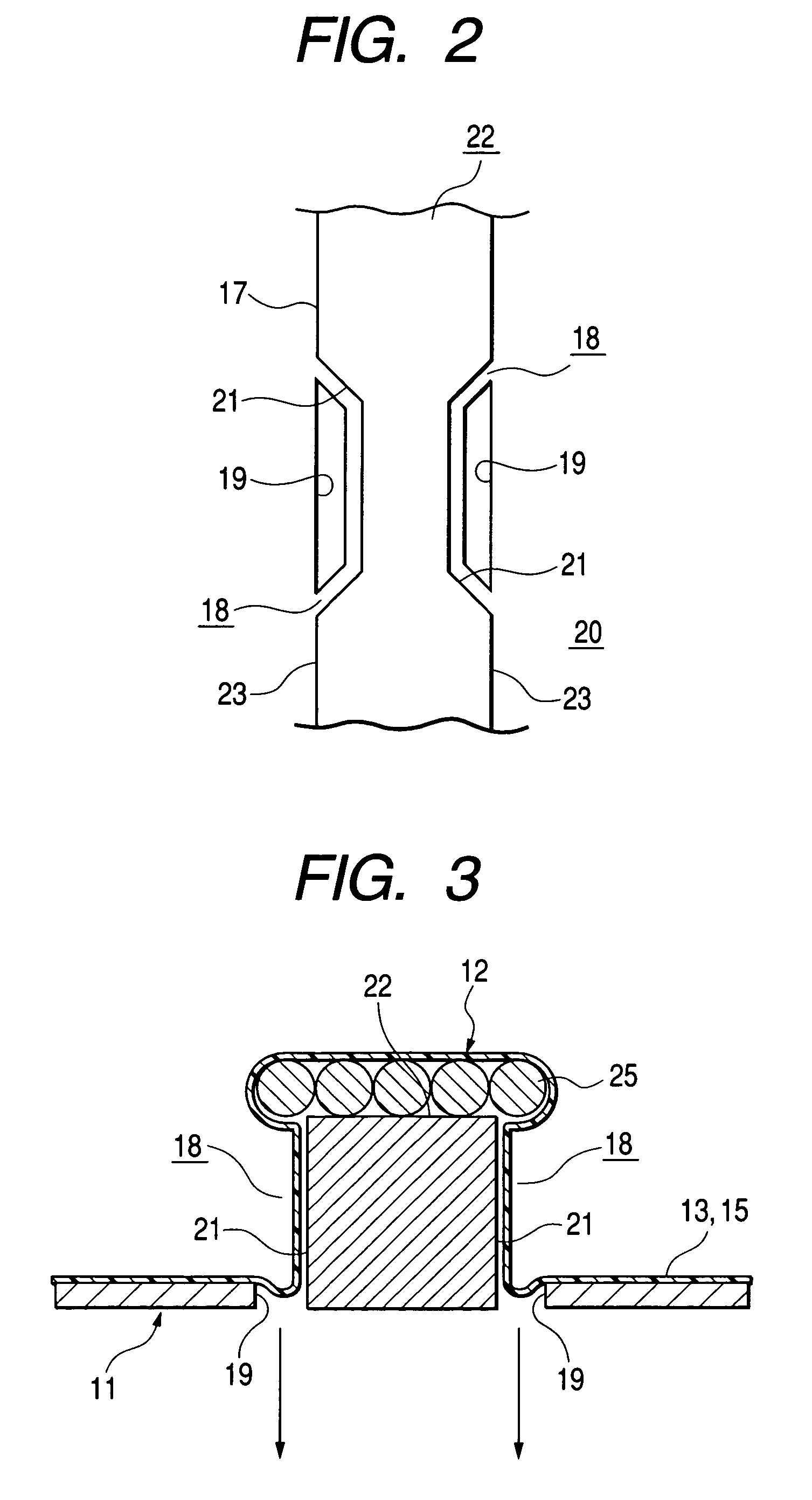Method of installing circuit member in resin-molded panel
- Summary
- Abstract
- Description
- Claims
- Application Information
AI Technical Summary
Benefits of technology
Problems solved by technology
Method used
Image
Examples
Embodiment Construction
[0085]A preferred embodiment of the present invention will now be described with reference to the drawings.
[0086]FIG. 1A is an exploded, perspective view explanatory of a method of installing a circuit member in a resin-molded panel, and FIG. 1B is a perspective view of a circuit member-incorporating resin-molded panel. FIG. 2 is a plan view of a circuit member-installing portion of a vacuum forming mold, FIG. 3 is a cross-sectional view of an important portion explanatory of the method of installing the circuit member in the resin-molded panel, and FIG. 4 is a cross-sectional view of an important portion of the circuit member-incorporating resin-molded panel. For better understanding, part of the drawings are exaggerated or omitted. First, the construction will be described.
[0087]In FIG. 1, reference numeral 1 denotes the vacuum forming mold of the invention, reference numeral 12 the circuit member, and reference numeral 13 a panel material. Reference numeral 14 denotes the circuit...
PUM
| Property | Measurement | Unit |
|---|---|---|
| Width | aaaaa | aaaaa |
| Height | aaaaa | aaaaa |
Abstract
Description
Claims
Application Information
 Login to View More
Login to View More - Generate Ideas
- Intellectual Property
- Life Sciences
- Materials
- Tech Scout
- Unparalleled Data Quality
- Higher Quality Content
- 60% Fewer Hallucinations
Browse by: Latest US Patents, China's latest patents, Technical Efficacy Thesaurus, Application Domain, Technology Topic, Popular Technical Reports.
© 2025 PatSnap. All rights reserved.Legal|Privacy policy|Modern Slavery Act Transparency Statement|Sitemap|About US| Contact US: help@patsnap.com



